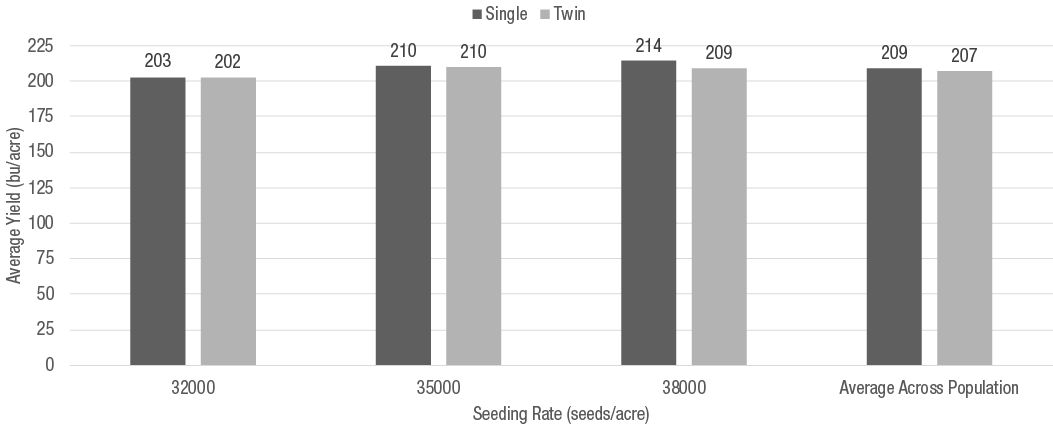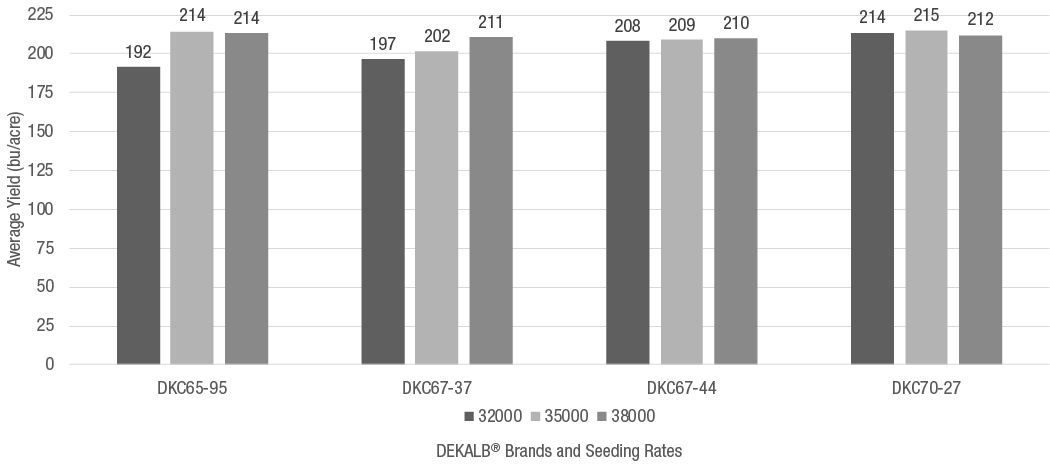5 MIN READ
How do Twin Rows and Plant Population Impact Corn Yield Potential? 2021
October 17, 2021
TRIAL OBJECTIVE
Twin row planting for corn production continues to come up as a decision point in southern corn production.
Bayer Learning Center at Scott, Mississippi has evaluated twin row vs single row plantings in corn production for several seasons. Previous studies showed only a marginal benefit to twin row configuration in most cases.
During 2021, a non-replicated plot was established at the Bayer Learning Center at Scott, Mississippi to evaluate the response of DEKALB® Brand corn products to various populations as well as single versus twin row production systems.
RESEARCH SITE DETAILS
- Study planted on Field B2 at the Bayer Learning Center at Scott, MS (SLC). All Agronomic inputs per local standard
- 275 lb/acre of nitrogen (N) surface applied as 28-0-0-5
- Four DEKALB® Brand products planted.
- DKC65-95 Brand
- DKC67-37 Brand
- DKC67-44 Brand
- DKC70-27 Brand
- Plots were single replicate, planted in single row 38-inch row crop planting units with Precision Planting® VSet2 Meters and plates installed.
- Twin row plots planted on 38-inch rows x 7.5-inch twins with Precision Planting VSet2 meters. This planter does not stagger as a traditional Monosem planter.
- Seeding rates of products planted included 32,000, 35,000 and 38,000 seeds per acre.
- Average yield (bu/acre) determined by harvesting entire plot with commercial combine and moisture content corrected to 15.5%.
| Location | Scott, MS |
| Soil Type | Commerce silty clay loam |
| Previous Crop |
Soybean |
| Tillage Type |
Conventional |
| Planting Date | 04/19/21 |
| Harvest Date | 9/09/2021 |
| Potential Yield (bu/acre) |
225 |
| Seeding Rate (seeds/acre) |
32K, 35K, 38K |
UNDERSTANDING THE RESULTS
- Relatively small differences were observed when comparing yield potential between the twin row and single row planting system (Figure 1). And while no penalty for planting twin rows was observed it should be noted that no advantage existed in this case regardless of planting population or corn product planted (Figure 2).


KEY LEARNINGS
The twin row corn planting system can be difficult to use due to concerns with equipment setup, bed preparation, planting depth and corn product selection. Yield data can vary from year to year with various row spacings depending on environmental conditions. Data from this 2021 study indicated that well-adjusted single row planters yielded as well as twin row, in most cases, and are generally easier to use on a practical basis.
- In this study, there was a positive response to population observed with some of the tested corn products. The most important decisions to make, regardless of row spacing, are those of product selection and planting population.
3013_R16